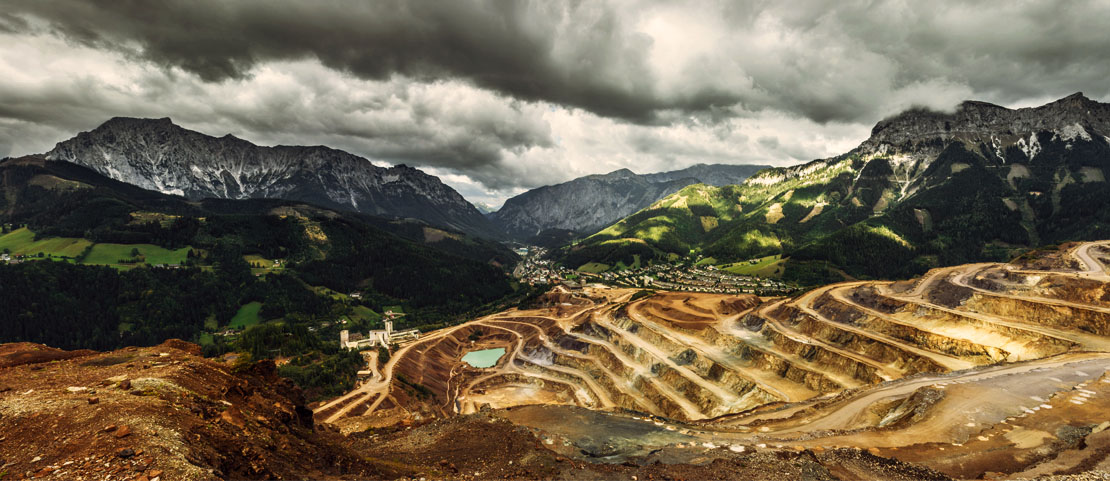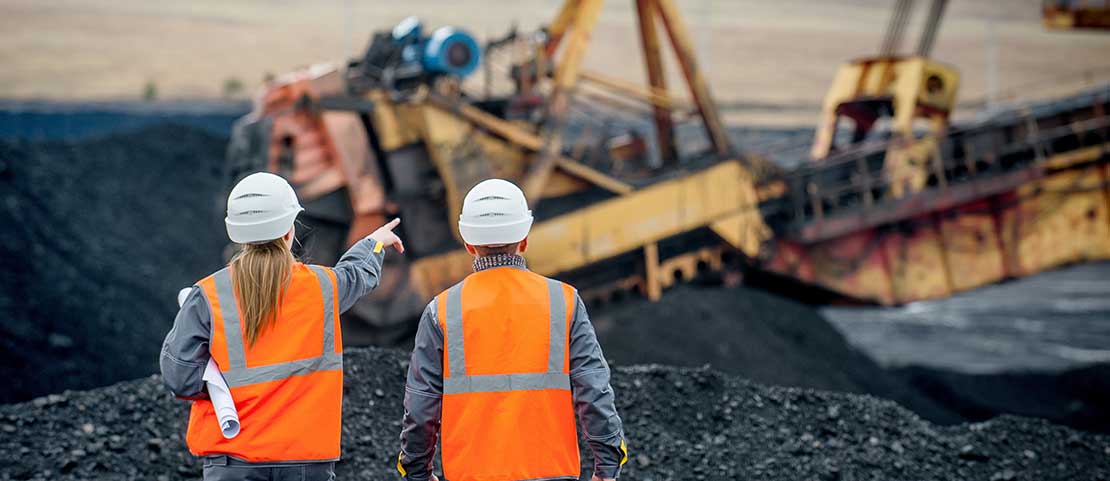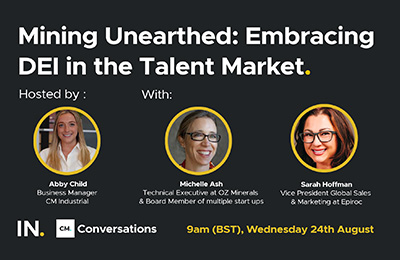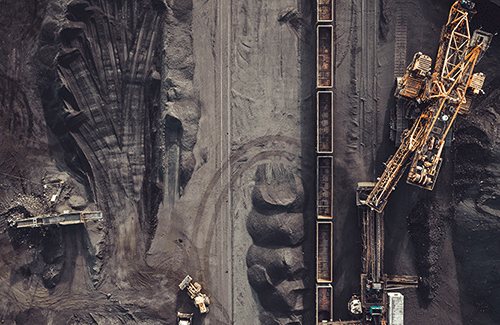

Mining's Environmental Conscience
Environmental concerns have long been the elephant in the room for mining houses around the world. Or, for environmentalists, mining has been the elephant in the room when it comes to our day-to-day lives. That’s because, as a society, we’re still so reliant on those minerals and commodities that come out of the ground.
Mining companies and service and equipment providers to those companies are criticised a lot for the impact they have on the environment, but I think this ever present criticism has had a positive impact. As a result of environmental concerns being a part of the conversation so often, mining companies have had no option but to become some of the most environmentally conscious in the world.
It’s similar to safety. As everyone knows mining is unavoidably a dangerous endeavour, there is a huge emphasis on HSE to mitigate that risk. It’s exactly the same mind set when it comes to mitigating the environmental impact of mining activity.
We hear from the major mining houses on a regular basis about their environmental contributions, but I wanted to explore what the OEMs and service providers are doing to increase their sustainability credentials.
I’ve spoken to senior leaders from 5 such suppliers below, asking them about the efforts they’re making to reduce this impact.
Kaisa Jungman
Development of Sustainable Business Development - Metso
JS: How are Metso working to reduce their impact on the environment?
Kaisa: We have an extensive sustainability agenda with key targets for each priority area. We want to be a responsible and trusted partner and bring sustainable productivity for our customers.
Being a responsible and trusted partner means that we take care of our employees, contractors and suppliers. As an example, last year we did over 100 sustainability audits for our suppliers. In our own manufacturing sites we concentrate on reducing energy consumption and emissions, waters usage and waste. In our type of industry, surely safety is the key priority for us and for our customers.
Our employees also feel very engaged to the company and our values. Last year, 99,2% of all employees (including thousands of blue-collar workers) were trained on our code of conduct. All these and many more programs mean, that we want our customers to feel that we minimize our environmental footprint and take care of our people and partners.
The business side of sustainability is the area were we can make the biggest impact by providing solutions and services to increase the process efficiency for the customer. This often means reduced energy and water consumption, less waste and emission etc. In our climate program we drive CO2 emission targets for all major emission sources. We have set a science-based target for our manufacturing, suppliers, transportation and product use phase (Three different grinding equipment). We also offset our flight emissions and push all our R&D projects to set energy efficiency targets and other sustainability related targets.
Climate emissions are one thing, but also waste, emissions and water are important issues for our customers. We want to serve them in these areas even better and look into ways to develop our product portfolio and services. The circular economy is one area we see highly important. Taking back wear parts, extending the life-cycle of the equipment with upgrades, refurbishments etc. And of course, already starting from the product use phase, how to design equipment that is as efficient as possible from the environmental point of view and bringing maximum safety and easiness for the customers.
Roger Forman
VP APAC - Andritz Separation
JS: What do Andritz do to protect the environment and reduce your footprint?
Roger: Andritz is a technology business with a reduce, re-use, recycle philosophy. In the mining context this is typically about dewatering. As a specific example, tailings treatment continues to be one of the fastest growing safety, environmental and operational challenges in the sector. As many mining areas worldwide also face the problem of water shortages, the recovery of valuable process water, is an added benefit of responsible tailings treatment.
Andritz has a broad array of technologies allowing many options relative to our clients’ unique needs and processes. In addition, we are a truly Global organisation, with an unparalleled ability to be where the work is.
Add to our extensive hardware range, the Andritz ‘Metris addIQ’ control system, and you have a well proven, intelligent solution for higher efficiencies in industrial processes and machines.
JS: How do you think the mining industry compares to others when it comes to being environmentally conscious?
Roger: Using the Australian mining industry as an example, social and environmental considerations are (quite rightly) front and centre. Regulators take a ‘whole of life’ philosophy to all aspects of the industry, from Safety, Feasibility, Environmental Impact and Project Management, to Operation and eventual site rehabilitation.
Companies are also much more proactive and genuine about community consultation, diversification and accountability than previous generations. Perhaps also, the industry is so large scale and overt, so omnipresent on the national economic landscape, and so regularly scrutinized, that good corporate citizenship has become the evolution, rather than the exception.
John Hebenton
Non-Exec Director @ Eco Minerals Research Ltd & Nu Fortune Gold Ltd and former President of Outotec China
JS: Do you think the mining industry has a strong environmental conscience? If so, is it listening to it?
John: If conscience is the moral sense of right and wrong that guides our actions, then there are an increasing number of practical examples to demonstrate the mining industry is listening keenly to its conscious when it comes to the environment.
To be environmentally responsible doesn’t come easily for a complex industry that has been in operation for eons. It requires innovation, thinking and acting differently from what has been done in the past, managing change by creating a supportive team environment and achieving sustainable, commercial results.
The gold industry has been one of the most exposed with a legacy of environmental challenges including the use of toxic cyanide, mercury and tailings dams. These processes have come under increasing scrutiny in recent years – in parallel with a dramatic rise in the value and global demand for gold.
Eliminating cyanide, mercury and associated tailings storage from the gold recovery process is a game-changer for the industry and, importantly, for communities around the world where gold miners operate. Currently, around 75% of gold extracted from ore is processed using the hazardous chemicals of cyanide or mercury, which are poisonous to humans and the environment.
The worldwide search for clean, efficient and commercially viable processing solutions is a prime example of the mining industry's environmental conscience in action.
It has been a long road but a breakthrough from Clean Mining – part of the Clean Earth Technologies Group – has found the sustainable and comprehensive answer. The Company’s innovative technology delivers commercial-scale, cost effective, cyanide-free and mercury-free gold processing. Clean Gold!!
The process reflects more than a decade of research and development by Australia’s national science agency, CSIRO. It was then extensively tested and the results proven in a commercial-scale pilot plant at ECO Minerals Research Plant in Western Australia. The new process is currently being rolled out in industrial-scale commercial operations globally.
The mining industry is backing its environmental conscience with action and investment and success is building success. Clean Mining is expanding the application of its unique polymer solution to address further environmental challenges, including the elimination of mercury from gold extraction. Clean Earth Technologies is also collaborating with other leading research partners, to develop a suite of environmental cleanup solutions for industries beyond mining.
Professor Benedikt Meier
Head of Products and Technology - thyssenkrupp Mining Technologies
&
Dr. Peter Börsting
Head of Technology, Innovation & Sustainability - thyssenkrupp Mining Technologies
JS: What do thyssenkrupp do to protect the environment and reduce your footprint?
Peter: Three years ago we started addressing the topic ‘Social License to Operate and Cooperative Mining’. Since then, this topic developed to one of the Top 3 risks in mining (study published by EY in 2019). We established a “Think Tank” – our Amsterdam-based campaign to address this topic – involving internal as well as external parties to understand, how thyssenkrupp can turn the afore mentioned “risk” into an “opportunity” for our clients, the environment, and last but not least our own business.
Our engineers from all over the world collaborated and discussed this with social environmental scientists and anthropologists. The setup underlined diversity at its best; it was a revelation what can be achieved by combining very diverse perspectives, background experience and social education; The Think Tank was leading into exciting development projects, the resulting products and services are being released to the market soon.
JS: What do you think is the most impactful thing a mining company can do to mitigate its effect on the environment?
Benedikt: Tailings recovery is a very good example how to improve environmental performance due to several factors. Re-mining old tailings (with comparably high ore contents today) substitutes ore production from a natural deposit. Furthermore, liquid-to-solid tailings processing reduces the volume of the deposit, mitigates fatal tailings disasters and supports subsequent mining rehabilitation.
Raja Ratnam
Global Product Manager - Schenck Process
JS: What do Schenck do to reduce your environmental footprint?
Raja: We have worked hard to make our equipment energy efficient. For our vibrating equipment, that means getting the mass of the equipment optimised and so the vibrating energy is better utilised to screen the product. We also work on longer life and so less use of fabrication material such as iron ore in any period. The consumables in our vibrating screen are predominantly the screening media – polyurethane, rubber.
The screening media comprise of square or rectangular panels (1ft x 1ft OR 1ft x 2ft). To have sufficient rigidity in the panels we have steel grids. So, this makes recycling expensive if not difficult.
We have developed plastic grids and are now on a journey to have a recyclable consumable product. Screening of a commodity like iron ore, sometimes need a lot of water to wash off the clay – we design more efficient screening media to allow better drainage and recycling of the process water. We are also seeing some changes to the wetness of the ore, as mining goes below the water table. Screening and separation becomes more difficult. So, we design new screening technology – using different motions like elliptical or circular motions rather than the conventional linear motion vibrating screens.
JS: How do you think the mining industry compares to others when it comes to being environmentally conscious?
Raja: I think mining industry knows the importance of environmental care – rehabilitation, water conservation, waste management, using solar for energy generation, improving efficiency in mining, using smarter mining technologies to identify better seams and mining plans etc.
Miners know that they need to show committed environmental stewardship to continue to get the social licence to mine. Creating jobs alone is not enough for the discerning communities now empowered with faster learnings from the global internet system about what’s happening to our world and climate. The environmental scorecard for all miners are very transparent to the community.
It’s clear that all corners of the mining industry have environmental concerns front and centre of their plans moving forward. The reduce, re-use, recycle model Roger from Andritz mentioned is increasingly becoming the cornerstone of responsible mining companies’ futures.
Whilst it’s impossible to completely eradicate the environmental impact of mining, it’s clear that the ‘environmental conscience’ is present. As Raja mentioned, this conscience is no longer optional for companies if they want to maintain their ‘social contract’ to mine.
Have anything you’d like to add? Or seen anything here you’d like to discuss with me? Drop me an email at Jamie.sheard@charltonmorris.com
Recommended.

Discussing Gender Diversity in the Mining Industry.
With the various challenges the mining industry faces, how can we champion gender diversity and what successes can inclusivity bring to your company? I hosted a live webinar to discuss just that. Click to read the key findings from our discussion.

Mining Unearthed: Embracing DEI in the Talent Market.
While mining companies have continued to raise awareness about the lack of diversity within the industry, actually addressing the issue remains a huge challenge. I invited some guests on to discuss how to overcome these within your company, and more.

Mining the Future, Technology First.
These mining tech trends give a vision of the future, with optimised environmental and economic solutions, lower risks, and much safer working conditions. Click here to read more about them.
.jpg)
Sustainable Mining Solutions? Get Your Head in the Cloud.
In this episode we speak with Sandeep Sandhu, General Manager of the Americas at RPM Global, about the power of digitisation to help traditional mining practices meet sustainable goals. Click to listen now.
Comments.